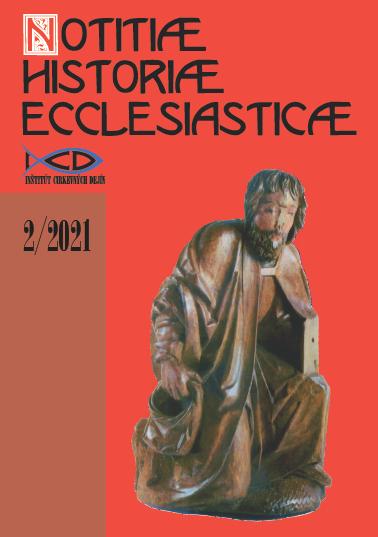Status diakonís v ranej cirkvi na základe liturgických hľadísk
The status of the diaconesees in the Early Church on the basis of liturgical aspects
Author(s): Angelus Štefan KurucSubject(s): Christian Theology and Religion, Gender Studies, History of Church(es), Theology and Religion, History of Religion
Published by: VERBUM - vydavateľstvo Katolíckej univerzity v Ružomberku
Keywords: deaconesses; rites of ordinations; Early Church; womens in the Church;
Summary/Abstract: The article considers the ordination rites of deaconesses in the Early Church according to the oldest Greek, Latin and Georgian liturgical manuscripts. The oldest reference to women as deacons occurs in Paul's letters (c. AD 55–58). Their ministry is mentioned by early Christian writers. The oldest ordination rite for deaconesses is found in the 5th-century Apostolic Constitutions. It describes the laying on of hands on the woman by the bishop with the calling down of the Holy Spirit for the ministry of the diaconate. A full version of the rite, with rubrics and prayers, has been found in the Barberini Codex In the Byzantine church, women who were deacons had both liturgical and pastoral functions within the church. These women also ministered to other women in a variety of ways, including instructing catechumens, assisting with women's baptisms and welcoming women into church services. They also mediated between members of the church, and they cared for the physical, emotional and spiritual needs of the imprisoned and the persecuted. Two types of monastic women were typically ordained to the diaconate in the early and middle Byzantine period: abbesses and nuns with liturgical functions, as well as the wives of men who were being raised to the episcopacy. There was a strong association of deacons who were women with abbesses starting in the late fourth century or early fifth century in the East, and it occurred in the early medieval period in the Latin as well as the Byzantine Church. A comparative analysis of sources shows that deaconesses had some functions in the domain of public liturgy which were similar to the functions of deacons, but not identical, and the ordination rite for women as deacons was not identical to the ordination rite for men as deacons. The ancient manuscripts confirm the ceremony performed for ordaining deaconesses was merely a solemn dedication and blessing.
Journal: Notitiae Historiae Ecclesiasticae
- Issue Year: 10/2021
- Issue No: 2
- Page Range: 9-15
- Page Count: 7
- Language: Slovak

